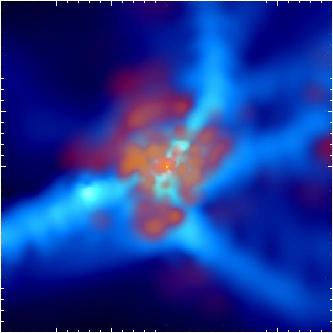

Composite image of overdensity (blue contour) and metallicity (red contour) distribution around a star-forming galaxy at z=2.43. The enriched gas tends to escape toward the lower density regions. The filament remains unaffected by the wind. As a result, the cold accretion is still maintained through the filaments, which continues funneling gas to the galaxy. ( Kawata & Rauch 2007)
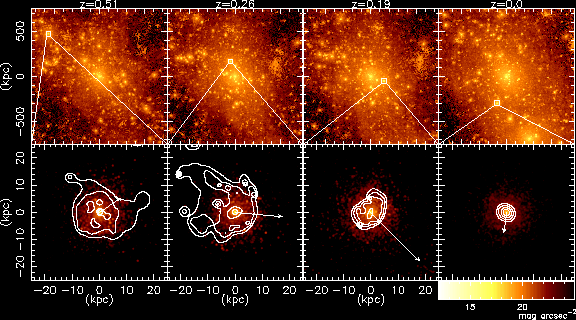
Evolution of the distribution of dark matter density distribution of a group of galaxies (top), and the close-up rest-frame R-band images of an infalling disk galaxy (lower) from the face-on view. The contours correspond to the cold gas density. The arrows indicate the velocity of the galaxy with respect to the velocity of the group. After the galaxy enters the group, the cold gas displays a clear tail morphology in the direction opposite the galaxy's motion. However, we found that ram-pressure is not sufficient in the group to remove the cold disk gas. On the other hand, the majority of the hot gas in the galaxy is stripped. Since the cooling of the hot-gas component provides a source for new cold gas, the stripping of the hot component effectively cuts off the supply of cold gas, which in turn leads to a quenching of star formation. ( Kawata & Mulchaey 2008)
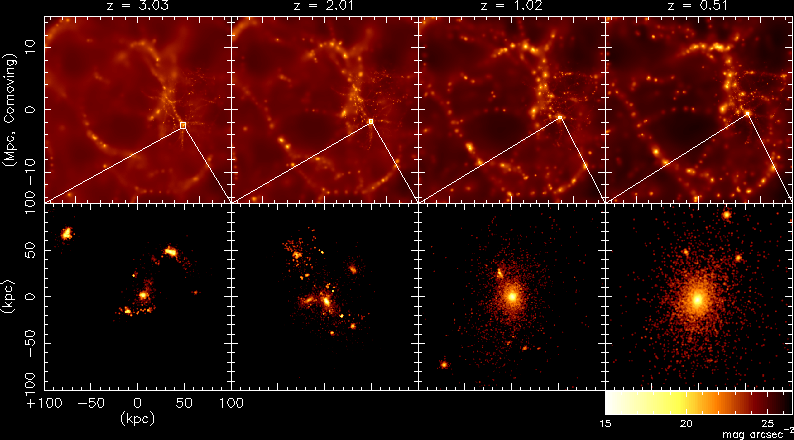
Upper Panels: Dark Matter density evolution, Lower Panels: J band
(observed frame) images of a simulated elliptical galaxy.
 Predicted X-ray image which shows the blown-out phase of the hot gas. |
 History of the feedback energy from SNe II (red), SNe Ia (cyan) and the AGN (yellow). |
|---|
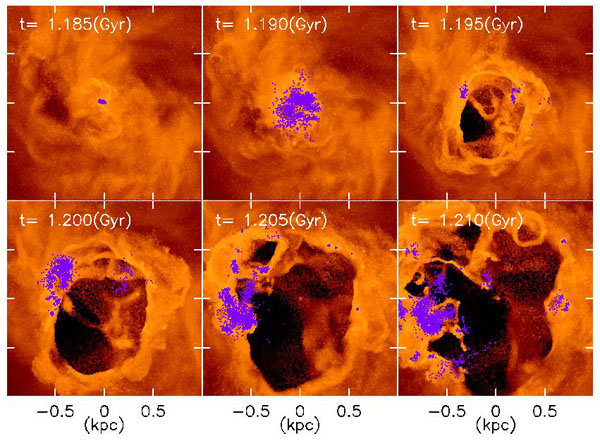
Face-on gas density map and the location of star formation (blue dots). The star formation in the accumulated high dense gas by the expanding bubble successively occurs and creates generations of the bubbles, which expands outwards. The propagation of the star formation can induce star formation in a more widely spread area and keeps the shape of the dwarf irregulars. Because there are a plenty of the gas in the dwarf irregular galaxies, our simulation demonstrated that the metallicity in star-forming regions is kept low due to the mixing of the metal-rich bubbles and the metal-poor inter stellar medium. Our simulations also suggests that the bubble-induced star formation leads to many counter-rotating stars, which can be tested observationally. The bubble induced star formatoin could be a dominant mechanism to maintain star formatoin in dIrrs, which is different from larger spiral galaxies. ( Kawata, Gibson, Barnes, Grand, Rahimi 2014)
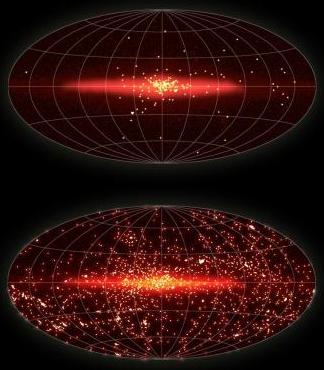
Distribution of the oldest stars in our galaxy (upper panel) compared with the full population of primordial stars (lower panel). While the oldest stars are all located near the center, where they are very difficult to detect, later forming stars made of gas without heavy elements should be located throughout the galaxy. The fact that no such stars have ever been detected places important scientific constraints on the properties and formation of these stars. Background image from DIRBE data, (c) Edward L. Wright ( Scannapieco, Kawata, Brook, Schneider, Ferrara, Gibson 2006 , press release)
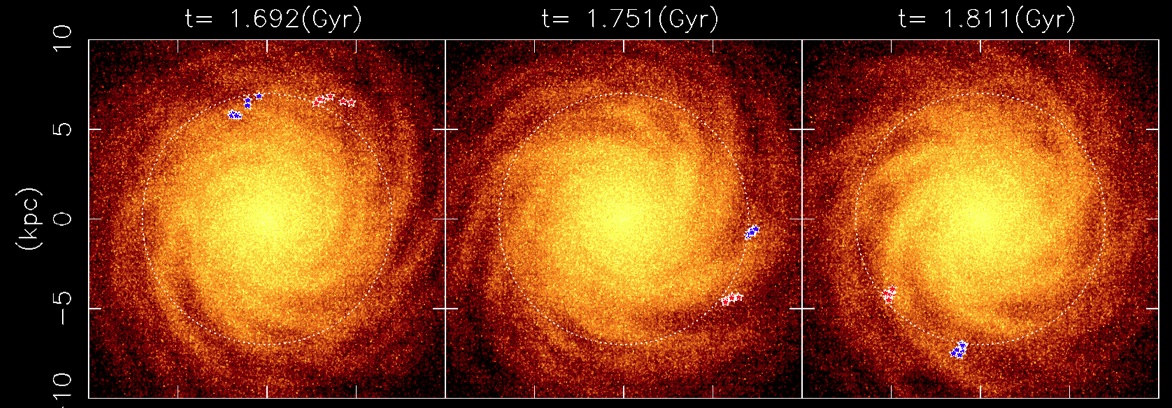
A time sequence of face-on density maps of a simulated galaxy disc (time increases from left to right). Rotation is clockwise. The spiral arm features are not permanent feature, but transient and recurent. The spiarl arms are co-rotating with stars and winding. Stars that migrate to larger (smaller) radii are highlighted as blue (red) stars respectively. A spiral arm forms close to the highlighted stars at t=1.692 billion years (Gyr), and grows in strength until fully formed at t=1.751 billion years. The highlighted stars behind the spiral arm (blue) are continually accelerated to larger radii until the spiral arm begins to disrupt at t=1.811 billion years. Conversely, the stars in front of the spiral are decelerated and move radially inward. The dashed white line marks the 7 kpc radius, to guide the eye.( Grand, Kawata & Cropper 2012, NAM2011 Press release)